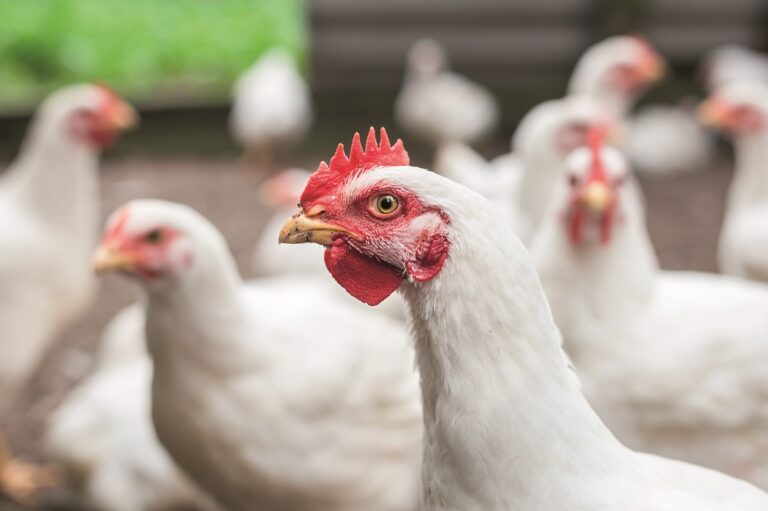Crown Chicken has spent more than two years trying to get planning permission for a new 20-shed chicken farm. Will it win?
More than two years ago, a planning application was lodged with West Norfolk council to build a new poultry farm that would supply Cranswick’s processing plant at Eye in Suffolk.
Nothing about the application from Crown Chicken, a Cranswick subsidiary, was unusual except the scale of the project – the application was for 20 broiler units, housing 870,000 birds, and four worker dwellings and associated infrastructure. The proposal at Airfield Farm and Methwold Farm, Feltwell, also involves 14 separate pig rearing units.
The council is finally due to decide whether the project can go ahead. A decision is expected this summer. But whichever way it goes, the implications go far beyond the villages in East Anglia where tensions are reaching breaking point.
Microcosm
Over the course of two years, the project has attracted massive local opposition (787 individual residents have written to the Borough Council of West Norfolk and King’s Lynn to date), and objections from statutory consultees including National England have also been lodged.
The project has even attracted national media attention, due to the formation of a local group called the Cranswick Objection Group, which claims on its website that if the farm goes ahead residents will no longer to enjoy any outdoor activity due to the “wretched stench”.
The battle is a microcosm of a wider situation played out across the UK. With growing demand for British poultry, it is clear the UK industry needs to build more poultry units or else accept that imports will continue to increase to fill the gap.
The latest data from Defra shows that will consumption of poultry meat is at an all-time high of 2.4 million tonnes over the past year, and over the past decade is up by 31%. However, production declined last year to 1.97 million tonnes. Imports stepped in to fill the gap, and were up year-on-year by 60,000 tonnes to 430,000 tonnes.
This trend is being exacerbated because of the move by most UK retailers to move to a 30 kilo per square metre stocking density requirement for all fresh chicken, instead of the Red Tractor maximum of 38 kilo per square metre. This 20% reduction in stocking means 20% more shed space is needed.
Ammonia
At the same time, planning has become more difficult to obtain because of the legal requirements to minimise ammonia emissions, the thresholds for which were tightened in 2022.
Planning rules require all livestock planning applications to consider ammonia impacts on the surrounding area, where they include a site of special scientific interest (SSSI) or a special area of conservation (SAC).
The standards as of May 2022, are that livestock businesses should contribute no more than 1% of the acceptable ammonia levels for the sustainable maintenance of any given area, in combination with any other development within 10km. Prior to 2022, the threshold was 4%, and before than 20%.
Local residents
Residents tend to be highly engaged in planning involving agricultural businesses. The objections lodged by residents are published on the council’s website and in the case of this application follow several key themes: concerns about smell, traffic, and the scale of the proposed farm.
“At a time when climate change is a paramount concern moving towards USA style mega farms is the last thing we should be doing and the worst use of our land,” says an objection from resident Alicia Howell.
“The thought of being forced to stay indoors because of the smell coming from the farm fills me with horror,” reads another objection from resident Emma Chaplin.
“This application is of a huge concern, none more so then [sic] to the health of my family, and this proposed factory farm (of which a huge volume of excrement and ammonia from the factory will be put into the surrounding area) will negatively impact the health of all in the surrounding area,” states another objection from resident James Power.
Animal activist groups have also lodged objections based on their concerns about intensive farming’s impact on animal welfare.
Need for chicken
What’s clear is British consumers want to eat chicken. The original planning application makes reference to this increasing demand.
Crown Chicken did not comment, but the planning application states that based on current consumption, “an additional 10,164,000 kg of poultry meat will be required to meet this demand. If these birds cannot be produced in the UK, they will have to be imported from abroad where the UK has no control over conditions.”
It adds the proposed development would “contribute to the national food infrastructure for the UK, whilst supporting and creating local jobs in the poultry sector.”
A spokeswoman for the Borough Council of West Norfolk and King’s Lynn told Poultry Business the final report recommending whether to allow the project to go ahead would be sent to the planning committee “in the late summer at the earliest”. She added the number of comments received was rare but “not unexpected” because “applications of this type and scale are rare. In this case it has also been influenced by the involvement of special interest groups.”
Whatever the final decision, it is sure to attract huge attention. The whole industry must now watch and wait.


